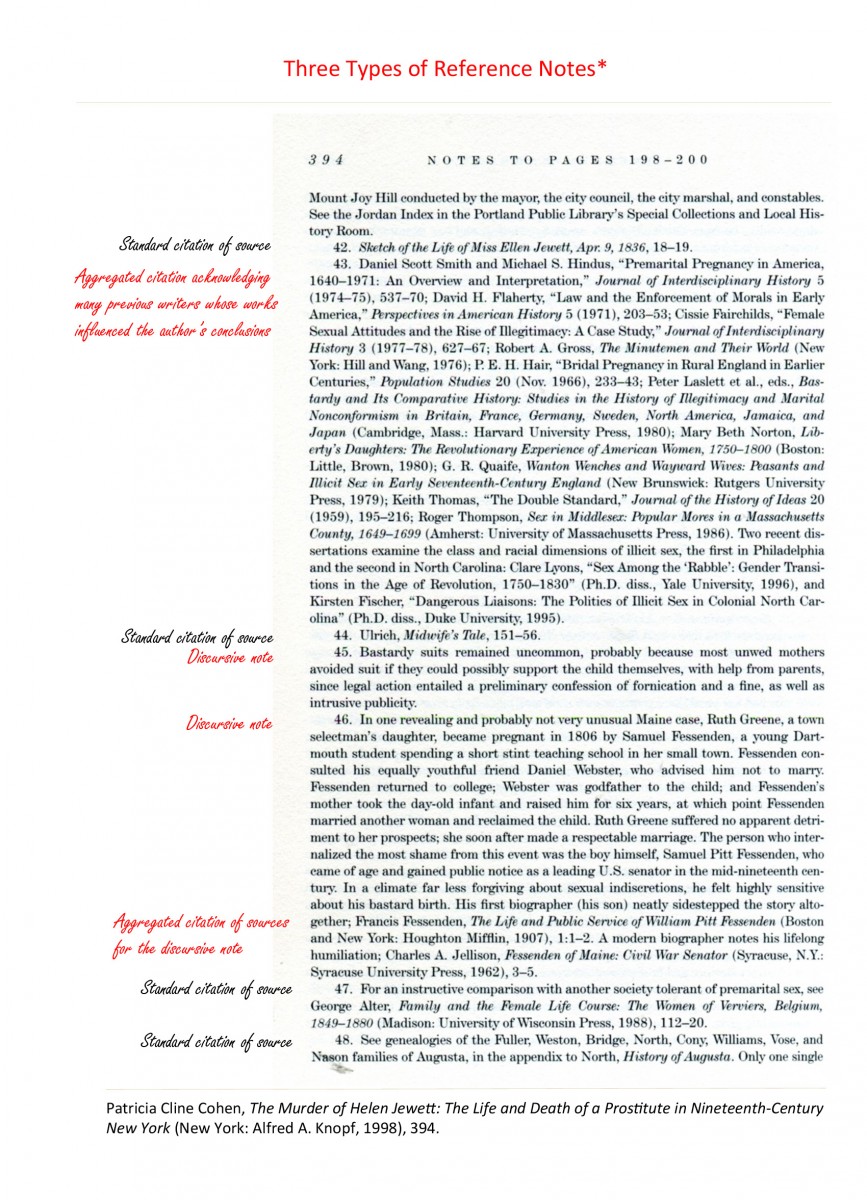Few readers like them. Even among lawyers and attorneys, who are often rapped for their dense prose, we hear complaints about the "inelegance" of overlong citations and the "burden" of footnotes filled with substantive matter that divert attention from the text itself.
History researchers know both problems all too well. When we rely heavily on original records (as we should), our citations can be quite complicated. Identifying a single document, found in a file that's in a collection that's in a record group at an archive somewhere, can easily put us over the 30-word threshhold many writing manuals set for their definition of "long citations." So can citations to online images, where we need to identify both the original record and the online supplier.
Two practices can help us reduce the "burden" of overlong citations.
1. Avoid clumping multiple citations into just one reference note.
If we are writing a scholarly analysis of a situation or event, and we're expressing a conclusion we have reached by studying the works of many others, then multiple citations in a single reference note will be hard to avoid. Rather than credit just one author for an idea that we drew from several, we usually should credit them all.
Realistically, this is not the usual cause of our overlong citations. More often, we use reference notes to identify the source of information we report in our text. Back in our school days, Miss Thistlebottom likely told us to use those in-text reference numbers sparingly. We kept her happy by putting just one superscript number at the end of a paragraph, and then used the corresponding footnote to cite all the sources that provided all the information that paragraph reported. An aggregate note, supporting an aggregate of facts.
This is where a change of habits can help our overlong-citation problem, and improve our reporting as well. That tiny little superscript reference number should always go at the end of the material that we take from a source. There, it tells a reader that all new "facts" since the last reference number comes from this new source. However, if one sentence reports detail from Source A, while the next sentence reports detail from Source B, then putting that tiny little superscript number at the end of the information that comes A, before plunging into the details from B, has two advantages. First, it will cut an overlong reference note down to a less intimidating size. Second, it will clarify to our readers—and to ourselves at a later date after our recollection of these sources has grown cold—exactly what information came from each source.
2. Avoid discussing stuff in a footnote that could be woven into the text.
Those long discursive notes is a major cause of why John Q. Public hates writing that "looks like a dissertation." If we divide our narrative discussion into two separate threads, one in the text and one in the notes, we force our readers to try and follow two threads at once. Many will quit in frustration or annoyance.
EE 2.7 recommends drawing a clear line between our narrative and our identification of sources:
"Source notes, ideally, should identify and discuss our sources. Matters that relate to our subject should be discussed in the narrative. Self-discipline in this matter not only trims bloated source notes but also produces clearer and cleaner writing."
And now for our caveat ...
Notwithstanding all the above, Yours Truly confesses to having broken both rules across many years as a historical writer. There is, to swipe a cliché, a time and a place for everything. When we write in various venues, we work with editors of diverse opinions and publishers with long-standing "house styles." As a "fer instance" to illustrate choices and their consequences: my latest book, published by a university press, disregards both of the above suggestions with considerable impunity. In classic "scholarly" style, we relegated reference notes to the end and include there many "peripheral discussions." The result? More-casual readers read the text, ignore the dense notes, and thereby miss many issues that are relevant to their own interests.
As EE 1.1 is often quoted for saying: Citation is an art, not a science. Part of the art of writing and citing is an assessment of when to break the rules and how much penalty we may face as a result.
